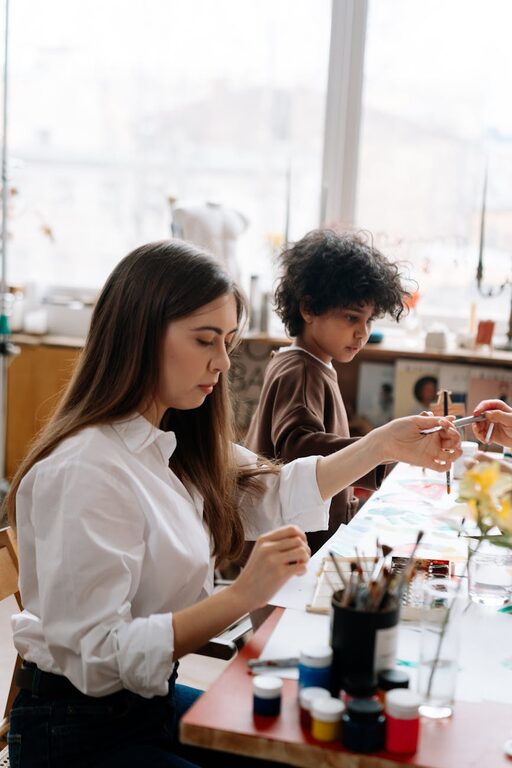
Creativity is often seen as a special talent, reserved for artists, writers, or inventors. However, creativity is a skill we can all develop and practice daily. It helps us solve problems, express ourselves, and find joy in everyday moments. The good news is that nurturing creativity doesn’t require any special tools or training—just a willingness to try new things and embrace curiosity.
In this post, we’ll share simple, practical ways to practice creativity every day. These activities fit easily into daily routines and can refresh your thinking, boost your mood, and inspire new ideas.
Why Practice Creativity Daily?
When you make creativity a daily habit, it becomes part of your mindset rather than a rare occurrence. This habit encourages flexible thinking, problem-solving, and resilience. It can also increase your confidence as you see your own ideas take shape and flourish.
Even small moments of creative practice can have big benefits: reducing stress, increasing focus, and making life more exciting. With that in mind, let’s explore some enjoyable ways to be creative each day.
1. Keep a Daily Creative Journal
Writing or sketching in a journal every day is a simple habit that opens your mind to creativity.
– Set aside 5–10 minutes daily to jot down thoughts, ideas, or doodles.
– Don’t worry about grammar or perfect drawing skills—write or sketch freely.
– Use prompts like “What inspired me today?” or “New ideas I want to try.”
– Over time, your journal becomes a treasure trove of ideas and reflections.
2. Explore Different Perspectives
Creativity thrives when you look at things from new angles.
– Try changing your usual routine or environment, even if just for a few minutes.
– When faced with a problem, ask yourself, “How would someone else solve this?”
– Practice empathy by imagining life from another person’s point of view.
– Use “What if?” questions to imagine alternatives, such as “What if cars could fly?”
This way of thinking encourages flexibility and innovation.
3. Engage in Creative Hobbies
Dedicating time to creative hobbies is a fun way to stimulate your imagination.
– Try activities like drawing, painting, cooking, gardening, or playing music.
– You don’t need to be skilled—focus on the enjoyment and process.
– Setting aside regular time, even just 15 minutes, lets your creativity flow.
– Consider joining a local class or online group to connect with others.
Hobbies offer a chance for hands-on creativity and relaxation.
4. Practice Mindfulness and Observation
Being fully present and observing the world around you sharpens your creative senses.
– Take a mindful walk and notice details you often overlook, like colors or sounds.
– Pay attention to your daily surroundings, conversations, and sensations.
– Record your observations in a notebook or voice memo.
– Mindfulness helps you connect ideas and find inspiration in everyday life.
5. Play Brain-Boosting Games and Puzzles
Games and puzzles are excellent for developing creative problem-solving skills.
– Try crossword puzzles, Sudoku, word games, or logic puzzles.
– Play with building blocks, pattern games, or storytelling games with friends.
– These activities make thinking fun and encourage out-of-the-box ideas.
6. Limit Screen Time and Embrace Downtime
Too much screen time can hinder creative thinking by overstimulating the brain.
– Set small goals to reduce time on social media or watching TV.
– Use this extra time for reflection, brainstorming, or trying creative activities.
– Quiet moments without distractions allow your mind to wander and generate new ideas.
7. Collaborate and Share Ideas
Creativity often blossoms through connection and collaboration.
– Discuss your ideas with friends, family, or coworkers.
– Join creative groups or online communities focused on your interests.
– Listen actively and build on others’ ideas to expand your creative horizons.
– Feedback and new perspectives help refine your thinking.
8. Set Small Creative Challenges
Motivate yourself with simple creative challenges.
– For example, write a short poem each morning or create a new recipe.
– Take a photo of something unusual every day.
– Challenge yourself to find three uses for a household object.
– These challenges keep creativity playful and consistent.
Final Thoughts
Creativity is accessible to everyone—it’s about cultivating a curious mindset and making small daily choices to explore and create. By incorporating some of these simple practices into your daily routine, you’ll notice improvements in your creative thinking and overall well-being.
Remember, the goal isn’t perfection but enjoyment and expression. Start small, be patient with yourself, and celebrate the creative discoveries you make along the way. Happy creating!
